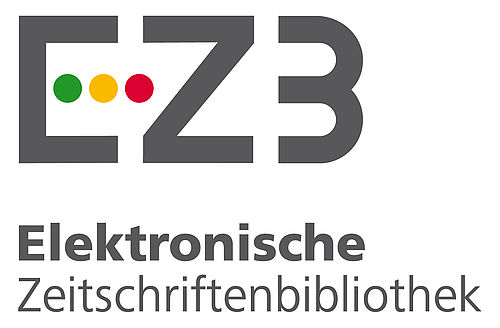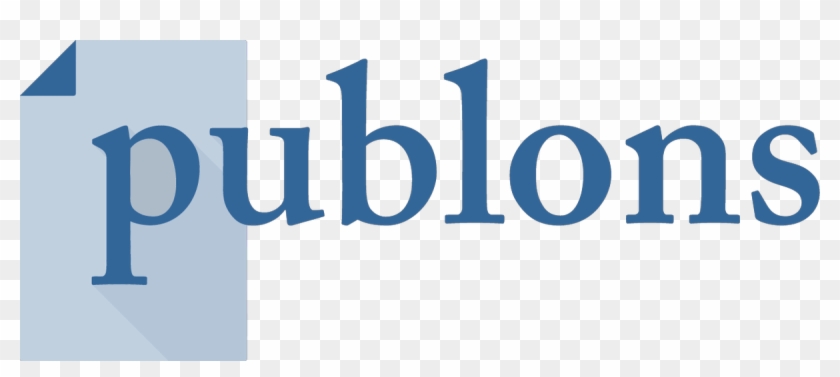Abstract
Project Number
TÜBİTAK Project number: 113O285
References
- Acikgoz N, Ilker E, Gokcol A. 2004. Evaluation of biological research on the computer. E.U. TOTEM No:2.
- Ahmad S, Kouka S, Islam M, Ahmad K, Aslan S, Aminullah Gill A. 2008. Germplasm evaluation of medicinal and aromatic plants in highland balochistan Pakistan. Pak. J. Bot. 40 (4): 1473-1479.
- Arabacı O, Ogretmen NG, Aslan DF, Ozcan II. 2012. Ontogenetical Variability of Coridothymus capitatus (L.) Genotypes. 13-15 September. Symposium of Medicinal Plants and Herbs; Tokat.
- Baser KHC. 2001. Healthy Oregano. Science and Technique. May. 74-77.
- Bayram E, Kırıcı S, Tansı S. Yılmaz G, Arabacı O, Kızıl S. Telci I. 2010. Possibilities to Increase the Production of Medicinal Plants and Herbs. VII. Technical Congress of Agriculturel Engineers Book of Reports 1. Community of Agricultural Engineers. Ozdoğan Press. 437-456.
- Ceylan A, Bayram E, Sahbaz N, Otan H, Karaman S. 2003. Yield Performance and Essential Oil Composition of Individual Plants and Improved Clones of Origanum onites L. Grown in Aegean Region of Turkey. Israel Journal of Plant Sciences. 51(4):285-290.
- Hayta E, Arabacı O. 2011. Determination of Different Germination Methods on the Seeds of Some Plants Named as Oregano. Journal of Adnan Menderes University Faculty of Agriculture 8(1):91-101
- Karamanos AJ, Sotiropoulou DEK. 2013. Field Studies of Nitrogen Application on Greek Oregano (Origanum vulgare subsp. hirtum (Link) Iestwaart) Essential Oil During Two Cultivation Seasons. Industrial Crops and Products 46: 246-252.
- Kokkini S. 1996. Taxonomy, diversty and distribution of Origanum species. Promoting the conservation and use of under utilized and neglected crops. 14. Oregano. Proceedings of the IPGRI International Workshop on Oregano. 8-12 May. CIHEAM; Valenzano, Bari, Italy.
- Leto C, Salamone A. 1996. Bio-agronomical Behaviour in Sicilian Origanum ecotypes. Promoting the conservation and use of under utilized and neglected crops. 14. Oregano. Proceedings of the IPGRI International Workshop on Oregano. 8-12 May. CIHEAM; Valenzano, Bari, Italy.
- Lukas B, Samuel R, Mader E, Baser KHC, Duman H, Novak J. 2013. Complex Evolutionary Relationships in Origanum section Majorana (Lamiaceae). Botanical Journal of the Linnean Society. 171: 667-686.
- Lukas B, Schmiderer C, Novak J. 2015. Essential oil diversity of European Origanum vulgare L. (Lamiaceae). Phytochemistry 119:32-40.
- Oflaz S, Kurkcuoglu M, Baser KHC. 2002. Pharmacognosic Researches on Origanum onites and Origanum vulgare subsp. hirtum. 14. Meeting of Medicinal Raw materials. 29-31 May. ISBN 975-94077-2.; Eskişehir.
- Said-Al Ahl HAH, Omer EA, Naguib NY. 2009. Effect of Water Stress and Nitrogen Fertilizer on Herb and Essential Oil of Oregano. Int. Agrophysics. 23:269-275.
- Sancaktaroğlu S, Bayram B. 2011. Researches on Determination of Yield and Quality Characteristics of Different Originated Origanum vulgare subsp. hirtum L. Journal of Ege University Faculty of Agriculture 48 (3): 265-276.
- SPSS 17.0. 2008. SPSS 17.0 for Windows. Chicago. IL. SPSS Inc.
- Sezik E, Tümen G, Kirimer N, Ozek T, Baser KHC. 1993. Essential Oil Composition of Four Origanum vulgare subspecies of Anatolian Origin. Journal of Essential Oil Research Vol. 5, Iss. 4.
- Tınmaz AB, Kürkcüoglu M, Baser KHC, Ozturk M. 2002. Determination of the Quality Characteristics of Origanum vulgare subsp. hirtum Populations. 14. Meeting of Medicinal Raw materials Reports. 29-31.05.2002. Eskişehir. ISBN: 9759407728. TSI 2004. Turkish Statistical Institute. Export Statistics, Ankara.
- Veres K, Varga E, Dobos Á, Hajdú Z, Máthé I, Németh E, Szabo K. 2003. Investigation of the Composition and Stability of the Essential Oils of Origanum vulgare ssp. vulgare L. and O. vulgare ssp. hirtum (Link) letswaart. Chromatographia 57 (1):95-98.
- W’glarz Z, Osidska E, Geszprych A, Przybyb J. 2006. Intraspecific Variability of Wild Marjoram (Origanum vulgare L.) Naturally Occurring in Poland. Rev. Bras. Pl. Med. Botucatu. 8:23-26.
- Wichtl M. 1971. Die pharmakogostich-Chemisehe Analys Band. 1. 479 p; Frankfurt.
- Žukauska I. 2001. Agrobotanical Features and Productivity of Wild and Cultivated Populations of Origanum vulgare. Botany, Acta Biol. Daugavp. 1(2):107-109.
Characterization of Origanum vulgare SUBSP. hirtum (LINK) Iestwaart Population and Determination of A Clones
Abstract
Identification of the high yielding and the good quality clones of one
population (B population) of Origanum vulgare subsp. hirtum (Link) Iestwaart was one of the
purposes in this study and furthermore some agronomic and quality
characteristics of individual plants were examined during two years
(2014-2015). Annual performances were determined according to the minimum and
maximum values of the first, second and non-flowering harvests of the
population. Also for second year,
minimum, maximum and mean values of the individual plants of the population
were stated in the paper. The aim was to reveal if the high yield and quality
characteristics of plants are based on the genotype. Individual plants of the B
population, the mean plant height was found as 39 cm, canopy value as 30.5 cm,
Fresh herb yield as 167.9 g/plant, Drog herb yield as 65.5 g/plant, Drog leaves
yield as 32.2 g/plant and the mean rate of the essential oil as 4,01%.
Considering the two years’ results of the B population, A clones were created in
2016 by selecting the high yielding and
of good quality genotypes. On A clones, the plant height, fresh herb yield,
Drog herb yield, essential oil rate and essential oil yield values were
determined between 13-52.5 cm, 8-624 g/plot, 4-218.4 g/plot, 1.6-100.1 g/plot, 1.08-7.92 % and
0.03-5.74 L/parcel, respectively.
Supporting Institution
The Scientific and Technological Research Council of Turkey (TÜBİTAK Project number: 113O285)
Project Number
TÜBİTAK Project number: 113O285
Thanks
This research was supported by The Scientific and Technological Research Council of Turkey (TÜBİTAK Project number: 113O285). This study is part of TUBITAK Project.
References
- Acikgoz N, Ilker E, Gokcol A. 2004. Evaluation of biological research on the computer. E.U. TOTEM No:2.
- Ahmad S, Kouka S, Islam M, Ahmad K, Aslan S, Aminullah Gill A. 2008. Germplasm evaluation of medicinal and aromatic plants in highland balochistan Pakistan. Pak. J. Bot. 40 (4): 1473-1479.
- Arabacı O, Ogretmen NG, Aslan DF, Ozcan II. 2012. Ontogenetical Variability of Coridothymus capitatus (L.) Genotypes. 13-15 September. Symposium of Medicinal Plants and Herbs; Tokat.
- Baser KHC. 2001. Healthy Oregano. Science and Technique. May. 74-77.
- Bayram E, Kırıcı S, Tansı S. Yılmaz G, Arabacı O, Kızıl S. Telci I. 2010. Possibilities to Increase the Production of Medicinal Plants and Herbs. VII. Technical Congress of Agriculturel Engineers Book of Reports 1. Community of Agricultural Engineers. Ozdoğan Press. 437-456.
- Ceylan A, Bayram E, Sahbaz N, Otan H, Karaman S. 2003. Yield Performance and Essential Oil Composition of Individual Plants and Improved Clones of Origanum onites L. Grown in Aegean Region of Turkey. Israel Journal of Plant Sciences. 51(4):285-290.
- Hayta E, Arabacı O. 2011. Determination of Different Germination Methods on the Seeds of Some Plants Named as Oregano. Journal of Adnan Menderes University Faculty of Agriculture 8(1):91-101
- Karamanos AJ, Sotiropoulou DEK. 2013. Field Studies of Nitrogen Application on Greek Oregano (Origanum vulgare subsp. hirtum (Link) Iestwaart) Essential Oil During Two Cultivation Seasons. Industrial Crops and Products 46: 246-252.
- Kokkini S. 1996. Taxonomy, diversty and distribution of Origanum species. Promoting the conservation and use of under utilized and neglected crops. 14. Oregano. Proceedings of the IPGRI International Workshop on Oregano. 8-12 May. CIHEAM; Valenzano, Bari, Italy.
- Leto C, Salamone A. 1996. Bio-agronomical Behaviour in Sicilian Origanum ecotypes. Promoting the conservation and use of under utilized and neglected crops. 14. Oregano. Proceedings of the IPGRI International Workshop on Oregano. 8-12 May. CIHEAM; Valenzano, Bari, Italy.
- Lukas B, Samuel R, Mader E, Baser KHC, Duman H, Novak J. 2013. Complex Evolutionary Relationships in Origanum section Majorana (Lamiaceae). Botanical Journal of the Linnean Society. 171: 667-686.
- Lukas B, Schmiderer C, Novak J. 2015. Essential oil diversity of European Origanum vulgare L. (Lamiaceae). Phytochemistry 119:32-40.
- Oflaz S, Kurkcuoglu M, Baser KHC. 2002. Pharmacognosic Researches on Origanum onites and Origanum vulgare subsp. hirtum. 14. Meeting of Medicinal Raw materials. 29-31 May. ISBN 975-94077-2.; Eskişehir.
- Said-Al Ahl HAH, Omer EA, Naguib NY. 2009. Effect of Water Stress and Nitrogen Fertilizer on Herb and Essential Oil of Oregano. Int. Agrophysics. 23:269-275.
- Sancaktaroğlu S, Bayram B. 2011. Researches on Determination of Yield and Quality Characteristics of Different Originated Origanum vulgare subsp. hirtum L. Journal of Ege University Faculty of Agriculture 48 (3): 265-276.
- SPSS 17.0. 2008. SPSS 17.0 for Windows. Chicago. IL. SPSS Inc.
- Sezik E, Tümen G, Kirimer N, Ozek T, Baser KHC. 1993. Essential Oil Composition of Four Origanum vulgare subspecies of Anatolian Origin. Journal of Essential Oil Research Vol. 5, Iss. 4.
- Tınmaz AB, Kürkcüoglu M, Baser KHC, Ozturk M. 2002. Determination of the Quality Characteristics of Origanum vulgare subsp. hirtum Populations. 14. Meeting of Medicinal Raw materials Reports. 29-31.05.2002. Eskişehir. ISBN: 9759407728. TSI 2004. Turkish Statistical Institute. Export Statistics, Ankara.
- Veres K, Varga E, Dobos Á, Hajdú Z, Máthé I, Németh E, Szabo K. 2003. Investigation of the Composition and Stability of the Essential Oils of Origanum vulgare ssp. vulgare L. and O. vulgare ssp. hirtum (Link) letswaart. Chromatographia 57 (1):95-98.
- W’glarz Z, Osidska E, Geszprych A, Przybyb J. 2006. Intraspecific Variability of Wild Marjoram (Origanum vulgare L.) Naturally Occurring in Poland. Rev. Bras. Pl. Med. Botucatu. 8:23-26.
- Wichtl M. 1971. Die pharmakogostich-Chemisehe Analys Band. 1. 479 p; Frankfurt.
- Žukauska I. 2001. Agrobotanical Features and Productivity of Wild and Cultivated Populations of Origanum vulgare. Botany, Acta Biol. Daugavp. 1(2):107-109.
Details
| Primary Language | English |
|---|---|
| Subjects | Agricultural Engineering |
| Journal Section | Research Article |
| Authors | |
| Project Number | TÜBİTAK Project number: 113O285 |
| Publication Date | December 26, 2019 |
| Published in Issue | Year 2019 Volume: 2 Issue: 2 |
Cited By
Can Origanum be a hope for cancer treatment? A review on the potential of Origanum species in preventing and treating cancers
International Journal of Environmental Health Research
https://doi.org/10.1080/09603123.2022.2064437
-------------------------------------------------------------------------------------------------------------------------------













-------------------------------------------------------------------------------------------------------------------------
 CUPMAP Journal is licensed under a Creative Commons Attribution-NonCommercial-NoDerivatives 4.0 International License.
CUPMAP Journal is licensed under a Creative Commons Attribution-NonCommercial-NoDerivatives 4.0 International License.
-----------------------------------------------------------------------------------------------------------------------------------------
This is an open access journal which means that all content is freely available without charge to the user or his/her institution. Users are allowed to read, download, copy, distribute, print, search, or link to the full texts of the articles, or use them for any other lawful purpose, without asking prior permission from the publisher or the author. This is in accordance with the BOAI definition of open access.
